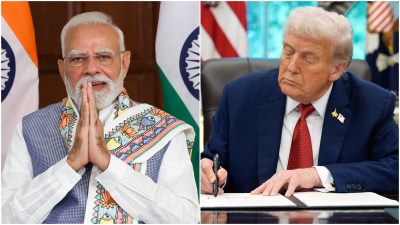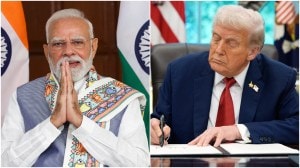Back to the blackboard
It is never too late to get a little familiar with economics for a prime minister. Foreign policy and national security has always been A.B....

It is never too late to get a little familiar with economics for a prime minister. Foreign policy and national security has always been A.B. Vajpayee’s first love and for the first four years in office he has spent little time thinking about the economy.
Given this, and forgiving him for wasting his time at Goa reflecting on ‘pseudo Hindutva’ rather than the economy, we give the prime minister full marks for keeping the focus on the economy in the first fortnight of the new year. Apart from inaugurating highways and holding forth on economic reforms at various fora, Vajpayee has started associating himself with major economic policy initiatives. His public launching last week of a Securities Market Awareness Campaign, initiated by the SEBI, marks an interesting point of departure for him.
Vajpayee was entirely correct in underlining the critical importance of stepping up the rate of investment in the economy. India invests far too little for a developing country. Most East and Southeast Asian economies invest upwards of 30 per cent of their national income. China and Korea claim a rate of investment of 40 per cent. India’s rate of investment has stagnated at around 24 per cent in recent years, marginally down from a peak of over 25 per cent in the mid-1990s. Admittedly, even this marks an impressive increase from the single digit percentages of the 1950s. However, it is necessary to further step up the rate of investment.
Till this point, Vajpayee got his economics right. However, in suggesting that investment is constrained by a low savings rate, he has put the cart before the horse and has been misled by his speechwriters into falling prey to a very old classical fallacy in economics that J.M. Keynes helped expose over half a century ago. It is not savings that determines investment, Keynes discovered in the inter-war period depression of the 1930s, but the other way round. Promote investment and savings will get created to balance the equation.
While it may be true that in recent years the incentive to save has gone down, with falling interest rates and rising consumerism, the real problem is that the rate of investment has remained stagnant. Neither ‘planned’ public investment nor ‘market inspired’ private investment has been going up.
Neither domestic investors nor foreign investors are willing to invest. It is this stagnation in investment that should worry the government. If the government pursues policies, both economic and political, that encourage new investment, then the savings required to balance the macroeconomic equation will get generated as long as sensible fiscal, monetary and external sector policies are also pursued. The BJP leadership must grasp the critical link between social and political stability and security and economic and business confidence.
If the NDA government can create that sense of confidence in the future, investment will increase and the savings rate will pick up too.




- 01
- 02
- 03
- 04
- 05

























